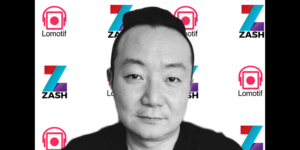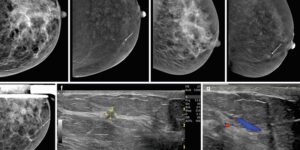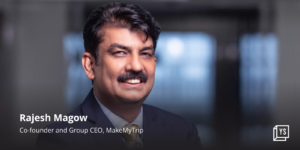‘4420’ is an ordinary number by all measures.
But for Anil Kumar, Chief Technology Officer at ToneTag, the number has haunted him all his life. It was how much Anil earned at his first job after he completed his Bachelors in Technology from an engineering college in Rajasthan.
But, in a lot of ways, the number has also motivated him, forced him to work harder, break free of moulds, and, most importantly, introduced him to the love of his life — software.
“When I looked at that paycheck, the first in my life, all I could think about was how the lowest-level employee in our family business was paid more than Rs 4,420. I realised this wasn’t for me. I’m comfortable admitting now that what I did next was for money, but unknowingly, it did bring into my life what I love to live and breathe now — software,” Anil tells YourStory.
After his bachelor’s, Anil enrolled in IIT-Delhi, which set him upon a lifelong path of software engineering and coding.
Visualising the code
Anil Kumar says he thanks his stars frequently for having failed his group discussion round for recruitments by Maruti and Mahindra – his dream companies at one point in time. Those failures, combined with his exposure to software engineering at IIT-Delhi helped him land his first job at a software firm that specialised in supply chain management, i2 Technologies.
At i2, Anil got his first taste for cloud computing and optimisation, and he quickly became an expert.
“In college, I used to read about optimisation a lot, especially how software can be used to optimise resources for an enterprise, how it fits in with everyday problems such as runways for air traffic control, manufacturers, vehicular traffic, etc. That really fascinated me,” he says.
Back in college, Anil used Microsoft Excel to run optimisation programs, which received a lot of appreciation from his professors, and entrenched Arun in his belief that he did not need to learn complex programming languages. But at i2, his assumptions and beliefs were challenged, especially when he was tasked with working with a team on a code to optimise a company’s supply chain processes.
While he was mulling the issue and trying to understand the process of writing code, his colleague — RK Maniyani – became one of his good friends. Anil confided in his friend that he wasn’t very confident about his skills as a coder, and that he didn’t know where to start or even how to think about writing code.
A well-wisher, RK suggested that maybe coding was beyond his abilities and that he probably would not “get it”. That spurred Anil, whose family had taught him to never back down from a challenge, to delve into it even more — and he asked his friend to help him understand the ways of the coding world.
After much insistence, RK told Anil to visit a bank. “He told me to observe the way a bank works,” quips Anil.
Next, RK told Anil to write a code that could optimise the bank’s software — and Anil did. However, much to his chagrin, his friend told him it was one of the most badly written codes he had ever seen.
“I was hurt, but I was also surprised. I kept pestering RK to give me another chance. He did, but before he left, he gave me a small tip: he told me to visualise the bank’s process, the way it worked and what all I’d observed when I spent that one day there.”
That was a game-changer for Anil.
“That visualisation of the process was the key to how I understood coding, and that lesson is still at the heart of how I code today,” he says.
Approaching problems
When he approaches a problem today, Anil prefers to use a tried and tested formula that he has gleaned from years of coding – not just at i2 Technologies, but also during his decade-long stint at Oracle.
He says he starts with visualising the main problem, then moves on to finalising a few facts of the solutions, and then work his way down from there
“I would say that’s probably the best way to approach a problem — taking a top-down view of things. It gives you a holistic view of everything before you approach it, or solve it,” Anil says.
The next step is asking the question ‘why’ — which is perhaps among the most important things to do. “I ask ‘why’ repeatedly, at every step. Why are you doing this? Why is this important? Why is this the best possible approach.”
Then, he asks other questions, such as what the software hopes to achieve, what processes it hopes to simplify — which generally leads to a structured version of the final code.
However, despite all the planning, brainstorming and charting out a flow to the code, Anil says any coder worth their salt always prepare themselves for surprises.
“No matter how much you brainstorm and plan, the moment you start going into granular details, you’ll always find some new instance, or a new situation emerge. The trick is to not digress from your main problem statement, and just keep solving the issues that pop up as and when they do,” he says. In other words, keep debugging as you unearth the bugs.
Too comfortable a zone
After i2 Technologies, life took Anil to Oracle, where he did much of what he was doing in his previous role. The only difference was he was building all the enterprise optimisation software for usage on the cloud, instead of hardware machinery.
“It was a different time. Everything was on Cloud, and enterprises wanted a cheaper, less bulky, hardware-free solution — cloud computing was everything,” he recalls.
Supply chain planning was at the forefront of many enterprises’ concerns at the time — around 2008-2014, especially when it came to optimisation. With a boom in internet services, cloud computing became the preferable mode of operation for many logistics and manufacturing ventures. In 2014, Anil became the Director of Value Chain Planning at Oracle, where he played a key role in the release of various Fusion applications.
Fusion is Oracle’s enterprise resource planning product that helps businesses adapt models and processes quickly so they can quickly scale, reduce costs, sharpen forecasts, and innovate better.
Around the time, Anil became well-acquainted with his next-door neighbour, Kumar Abhishek, who, at the time, was building a product to enable payments and financial services using sound waves. Anil took a personal interest in the project and helped Kumar with various aspects of the product he wanted to build. He even agreed to help him hire a techie to help bring his vision to life.
As someone who had a natural knack for finance and fintech, Anil found much excitement in his dealings with Kumar, who founded ToneTag. On the flip side, he realised he was losing his zest for his daytime job at Oracle
“At that point, I’d been doing the same things for over a decade. I was in a very advantageous position — I had a good, well-paying job, my career progression was good. But that was my problem, the fact that I was feeling comfortable with whatever I was doing, so much so that I realised I’d started doing things on autopilot.”
That didn’t sit quite right with Anil, and, in an ironical turn of events, he gave up a prosperous career – that earned him a lot more than Rs 4,420 – for passion.
“It became a situation where I realised I wasn’t learning anything at all, and I needed to be in a place where I could keep learning. So, I had to get into the learning mode again and open my mind. That led me to explore the startup world, and eventually, ToneTag” he says.
Building proximity communication tech
At ToneTag, where Anil joined as its CTO in 2019, he has been pioneering the creation of a proximity communication technology, and testing its applications for not just payments solutions, but also non-payment use cases, such as for shopping or digitising neighbourhood stores.
An example of how Oyeti can be used (Image credit: ToneTag)
“Imagine walking into a retail outlet, and without even taking out your phone, or opening an app, the salespersons in the store know your purchase history and consumption patterns. They can then assist you better, offer better discounts, and make your shopping experience more enjoyable and optimal,” Anil says.
The product is being tested for voice-based checkouts, restaurant ordering, and using sound wave technology in appliances such as bulbs, apart from enabling phones to communicate with each other using sound waves, for payments.
With Oyeti, a platform Anil has been building with his team, the Bengaluru-based startup is looking to foray into the wearables space. It is designing smart earbuds that can be engineered to perform tasks such as ordering clothes, food, groceries, and accessories, via voice, as well as enable frictionless transactions and shopping.
He has also been responsible for setting up ToneTag’s R&D centre, as well as building its tech team to take the startup to the next level.
“Trying to better customers’ lives has always been a driving force in my career. At ToneTag too, my focus is always on how my software is helping people save money and time, and do things better,” Anil says.
YourStory’s flagship startup-tech and leadership conference will return virtually for its 13th edition on October 25-30, 2021. Sign up for updates on TechSparks or to express your interest in partnerships and speaker opportunities here.
For more on TechSparks 2021, click here.
Applications are now open for Tech30 2021, a list of 30 most promising tech startups from India. Apply or nominate an early-stage startup to become a Tech30 2021 startup here.

![You are currently viewing [Techie Tuesday] How software came into ToneTag CTO Anil Kumar’s life unexpectedly, and became the great love of his life](https://blog.digitalsevaa.com/wp-content/uploads/2021/08/TT-12-1629128758189.png)

![Read more about the article [Funding alert] Biotech startup immunitoAI raises $1M in seed round led by pi Ventures](https://blog.digitalsevaa.com/wp-content/uploads/2021/09/Imagezpdw-1631117249930-300x150.jpg)
![Read more about the article [Year in Review 2021] Top 10 stories of companies and their ‘Turning Point’](https://blog.digitalsevaa.com/wp-content/uploads/2021/12/feature-04-1639648169326-300x150.png)





